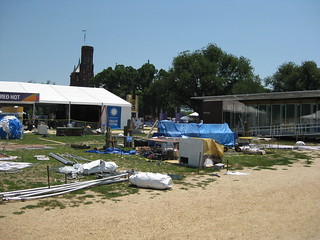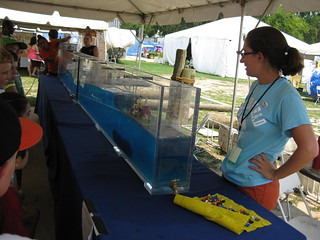 NEWPORT, Ore. – The $15 billion ornamental fish industry faces a global problem with antibiotic resistance, a new study concludes, raising concern that treatments for fish diseases may not work when needed – and creating yet another mechanism for exposing humans to antibiotic-resistant bacteria.
NEWPORT, Ore. – The $15 billion ornamental fish industry faces a global problem with antibiotic resistance, a new study concludes, raising concern that treatments for fish diseases may not work when needed – and creating yet another mechanism for exposing humans to antibiotic-resistant bacteria.
The risk to humans is probably minor unless they frequently work with fish or have compromised immune systems, the authors said, but transmission of disease from tropical fish has been shown to occur. More serious is the risk to the ornamental fish industry, a $900 million annual business in the United States.
There are few regulations in the U.S. or elsewhere about treating ornamental fish with antibiotics, experts say. Antibiotics are used routinely, such as when fish are facing stress due to transport, whether or not they have shown any sign of disease.
“We expected to find some antibiotic resistance, but it was surprising to find such high levels, including resistance in some cases where the antibiotic is rarely used,” said study Tim Miller-Morgan, Oregon Sea Grant’s Extension aquatic species veterinarian and an assistant professor with OSU’s College of Veterinary Medicine. “We appear to already have set ourselves up for some pretty serious problems within the industry.”
In the new study, 32 freshwater fish of various species were tested for resistance to nine different antibiotics, and some resistance was found to every antibiotic. The highest level of resistance, 77 percent, was found with the common antibiotic tetracycline. The fish were tested in Portland, Ore., after being transported from Colombia, Singapore and Florida.
Findings of the study were reported in the Journal of Fish Diseases.
The bacterial infections found in the fish included Aeromonas, Pseudomonas, Staphylococcus and others, several of which can infect people as well as fish.
Problems and concerns with antibiotic resistance have been growing for years, Miller-Morgan said. The nature of the resistance can range widely, causing an antibiotic to lose some, or all of its effectiveness.
There have been documented cases of disease transmission from fish to humans, he said, but it’s not common. It would be a particular concern for anyone with a weak or compromised immune system, he pointed out, and people with such health issues should discuss tropical fish management with their physicians. Workers who constantly handle tropical fish may also face a higher level of risk.
From an industry perspective, losses of fish to bacterial disease may become increasingly severe, he said, because antibiotics will lose their effectiveness.
Anyone handling tropical fish can use some basic precautions that should help, Miller-Morgan said. Consumers should buy only healthy fish; avoid cleaning tanks with open cuts or sores on their hands; use gloves; immediately remove sick fish from tanks; consider quarantining all new fish in a separate tank for 30 days; wash hands after working with fish; and never use antibiotics in a fish tank unless actually treating a known fish disease caused by bacteria.
Learn more
- Read the news release from OSU News & Research Communication
- Read the complete research report in the Journal of Fish Diseases
- Learn about Oregon Sea Grant’s Aquatic Animal Health program






